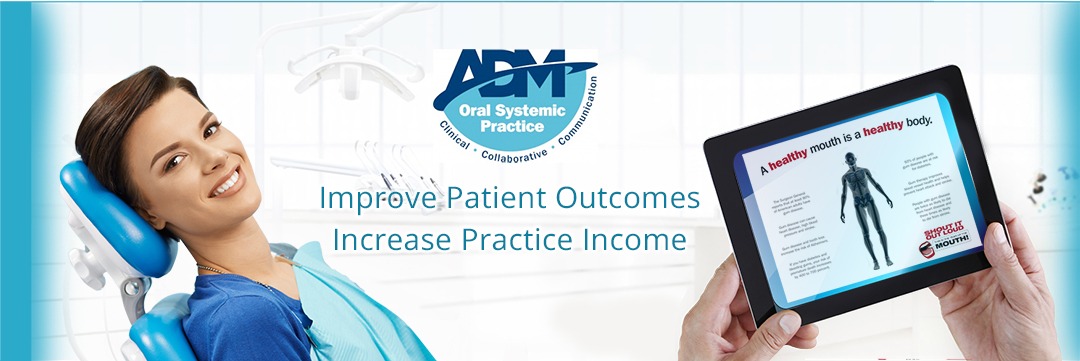By Charles Whitney, MD and Daniel A. ‘Danny’ Bobrow, MBA
Dental hygienists are uniquely positioned to improve the health of America. Physicians (as well as dentists) need your help! Here’s a program that’s proven to improve, not only the health of patients, but also the financial health of your practice.
Periodontal infection, whether or not inflammation is present, has been associated with many systemic diseases including diabetes, heart attack, stroke, stillbirth, preterm labor, and high blood pressure. Until insulin resistance is addressed and treated, it is difficult to eradicate this infection.
Insulin resistance raises blood sugar and, eventually, causes diabetes. Evidence suggests that a skilled hygienist can administer expert therapy and yet, unless glucose metabolism is normalized, be unable to eliminate infection and inflammation.
Dietary and other health choices leading to obesity and pre-obesity are the main causes of most insulin resistance. In fact, they are the mother and father of many preventable systemic diseases.
The obesity epidemic is the reason the Centers for Disease Control (CDC) predicts that our children’s generation will have a shorter life expectancy than our own!
Curing obesity can cure insulin resistance and prevent diabetes. Doing so also leads to greater success with eradicating periodontal infection and inflammation.
Physicians continue, by and large, to react to diseases by prescribing medication for high blood pressure, hypertension, and diabetes. Once a person is diagnosed with diabetes, many have already lost up to 50% of their insulin producing beta cells.
The medical community remains ineffective at treating insulin resistance because most physicians lack the time and ability to effectively treat obesity. 79% of primary care physicians have never been trained to counsel a patient about obesity. We simply tell them to eat less and move more. Of equal concern, the ‘O word’ has become a taboo subject to broach with many patients.
Fortunately, it is a simple matter to acquire the verbal skills to incorporate this conversation into your patient treatment protocol.
The Third Era of Medicine
The first era of medicine ended when we effectively controlled infectious diseases with antibiotics, immunizations, and improved public health.
Regrettably, most in the medical profession remain trapped in the second era of medicine, where the focus remains on reacting to disease, and only after end-stage symptoms (ranging from bleeding on probing to a cardiac event) has already manifested.
This second era approach in the presence of the disease-causing obesity epidemic is literally bankrupting our health care system, and bankrupting our economy!
It is incumbent upon all health professionals to move into the third era of medicine where the focus is on creating health, not just reacting to poor health. Curing obesity and teaching our patients the habits of health to maintain a healthy weight, leads to a happy and appreciative patient, and one who not only makes a positive contribution to the productivity of our society, serves as a ‘walking billboard’ for the practice that helped them succeed at achieving optimal health.
Create a Third Era Dental Practice
We are all health professionals. Accordingly, we ought to treat the whole person, not just a designated body part! A passionate dental hygienist is positioned perfectly to be the point person to champion this third era oral-systemic practice mindset, to the benefit of your patients, your practice, and society.
An effective oral-systemic practice need not be a financial loss leader. On the contrary, it can create a healthy revenue stream for all involved by offering a professional coaching service to those of your patients, as well as prospective patients, who want to create health in their lives.
In November 2011 the New England Journal of Medicine published a study showing that, when a person possesses both a learning tool for achieving a healthy lifestyle and a health coach to work with and support them, they are significantly more likely to maintain long-term weight loss than those provided with only the learning tool. Yet, even with the benefit of a coach, those patients with class II obesity were only able to lose an average of 10 pounds after two years.
Dr. Wayne Andersen intuitively understood this information 12 years ago when he left a lucrative job at the world-renowned Cleveland Clinic. He created an effective coaching, and best in class learning system he calls The Habits of Health. He knew studies showed that people who use a portion controlled meal replacement (PCMR) program succeeded at losing weight. However, 85% of these people regained the weight they lost because they returned to the habits of disease that led to their original weight gain.
Dr. Andersen added safety studies and his coaching and learning programs to the PCMR, and created a comprehensive optimal health program. Individuals and practices can easily implement it at virtually no cost (the client merely shifts their grocery budget from one basket of food to another). Health professionals coach as little or much as they want, typically assigning the responsibility for coaching to the hygiene department.
Imagine the reaction of a physician when he or she discovers that their patient has successfully created health thanks to the assistance of their dental practice and team! It serves as a powerful force driving collaboration among the dental and medical professions that can only result in further improved patient outcomes.
Your patients and our country need your help. To learn more about the Third Era Model is grassroots effort to carry America into the third era of medicine today.
To learn more about the third era of healthcare send an email to DBobrow@OralSystemicHealth.com







